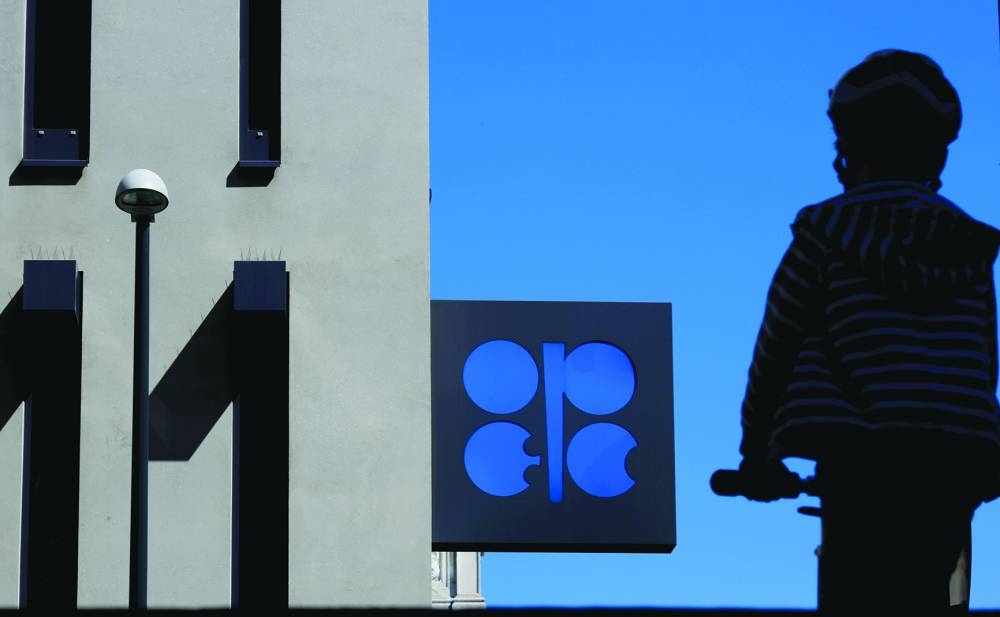Opec yesterday flagged downside risks to summer oil demand as part of the backdrop to shock output cuts announced by Opec+ producers on April 2, although the producer group maintained its forecast for global oil demand growth in 2023.
Some members of Opec+, which includes Opec, Russia and others, announced new voluntary production cuts on April 2. The unexpected move has prompted oil to rally towards $87 a barrel from below $80.
Opec+ gave little information on the reasons for the surprise cuts, saying in a statement they were a “precautionary measure” to support market stability. Some Opec delegates told Reuters they did not know the exact reasons for the reduction.
But in a discussion on the summer market outlook in its monthly oil report yesterday, the Organisation of the Petroleum Exporting Countries (Opec) said oil inventories looked more ample and global growth faced a number of challenges.
“OECD commercial inventories have been building in recent months, and product balances are less tight than seen at the same time a year ago,” Opec said.
Opec also said the usual US seasonal demand uptick could take a hit from any economic weakness due to interest rate hikes, and the reopening of China after strict Covid containment measures were scrapped had yet to stop a decline in global refining intake of crude.
“It should be noted that potential challenges to global economic development include high inflation, monetary tightening, stability of financial markets and high sovereign, corporate and private debt levels,” Opec said.
Still, Opec maintained its forecast that oil demand will rise by 2.32mn barrels per day (bpd), or 2.3%, in 2023 and nudged up its forecast for China. The global figure was unchanged for a second straight month.
Opec left its 2023 economic growth forecast at 2.6% and cited potential downside risks. Still, it said the spillover from US bank failures in March had had a limited economic impact.
The report also showed Opec’s oil production fell in March, reflecting the impact of earlier output cuts pledged by Opec+ to support the market as well as some unplanned outages.
Opec said its March output fell by 86,000 bpd to 28.80mn bpd.
Oil prices were stable earlier on Thursday as the market weighed the prospect of tight supply against possible recession in the US, the world’s largest oil consumer.
Brent crude fell 7 cents, or 0.08%, to $87.26 a barrel by 0935 GMT. US West Texas Intermediate (WTI) was unchanged at $83.26.
Both benchmarks had risen 2% on Wednesday to their highest in more than a month as cooling US inflation spurred hopes that the US Federal Reserve will stop raising interest rates.
However, minutes from the Fed’s last policy meeting indicated that banking sector stress could tip the economy into recession, which would weaken US oil demand.
“Global economic growth is fragile and inflationary pressure could easily become elevated again,” said Tamas Varga of oil broker PVM.
While the executive director of the International Energy Agency expects the move to tighten supply in the second half of the year and push oil prices higher, the International Monetary Fund on Tuesday highlighted the risk this poses to global economic expansion.
For every 10% rise in the price of oil, IMF models show a 0.1 percentage point reduction in growth and a 0.3 percentage point increase in inflation, said IMF chief economist Pierre-Olivier Gourinchas said.
Business
Opec cites risks to summer oil outlook, holds demand forecast
Opec yesterday flagged downside risks to summer oil demand as part of the backdrop to shock output cuts announced by Opec+ producers on April 2, although the producer group maintained its forecast for global oil demand growth in 2023.

A person passes the logo of Opec in front of its headquarters in Vienna, Austria. Opec yesterday flagged downside risks to summer oil demand as part of the backdrop to shock output cuts announced by Opec+ producers on April 2, although the producer group maintained its forecast for global oil demand growth in 2023.
